Every Friday, we meet a member of the BFS and peer deep into their soul (or, at least, a form they filled out). Want to be featured? Email us: online@britishfantasysociety.org
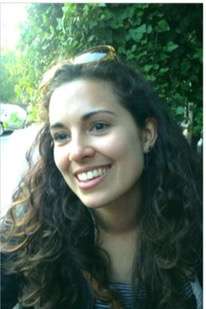
Name:Â
Rym Kechacha (she/her)
Which region are you based in?Â
Norwich. I’m from London but I moved here just before the pandemic which has been in almost all ways a truly great decision.Â
If you write, which genre:
Fantasy
Are you drawn to any specific SFFH sub-genres?Â
I love historical fantasy, alternate history and mythological retellings, but I’m a completely omnivorous reader and I’ll read anything!
Your influences
Tell us about the book/film/thing that got you into SFFH: What was it? How old were you? What impact did it have on you?
I was maybe eight or nine and steadily working my way through all the magic-looking books at the local library, asking my mum to order through the inter-library loan system all the books in the series I liked that were missing, and then Charmed Life by Diana Wynne Jones turned up on a shelf one Saturday afternoon. I was completely hooked. It was clearly a book for children, but (as I’d discover as I tore through the rest of her novels) she was not in the business of patronising, or talking down to her audience, or dumbing down her storytelling.
Her plots were complex and knotted, her endings often stubbornly open, her baddies carelessly, banally bad in a very honest and true way, her heroes and heroines flawed. I felt that she trusted me, her young reader, implicitly and taught me how to read her as I went along (and perhaps, by extension, how to really read anything.) Now I’d say my favourite book of hers is Fire and Hemlock — a loose retelling of the ballads of Tam Lin and Thomas the Rhymer — but her Arthurian retelling, Hexwood, is so brilliantly bonkers that I don’t understand how she did it. Honestly, I could write a book on her work (maybe someone will let me one day!) and I’m really looking forward to giving them to my own daughters when the time comes so I can enjoy them all over again.
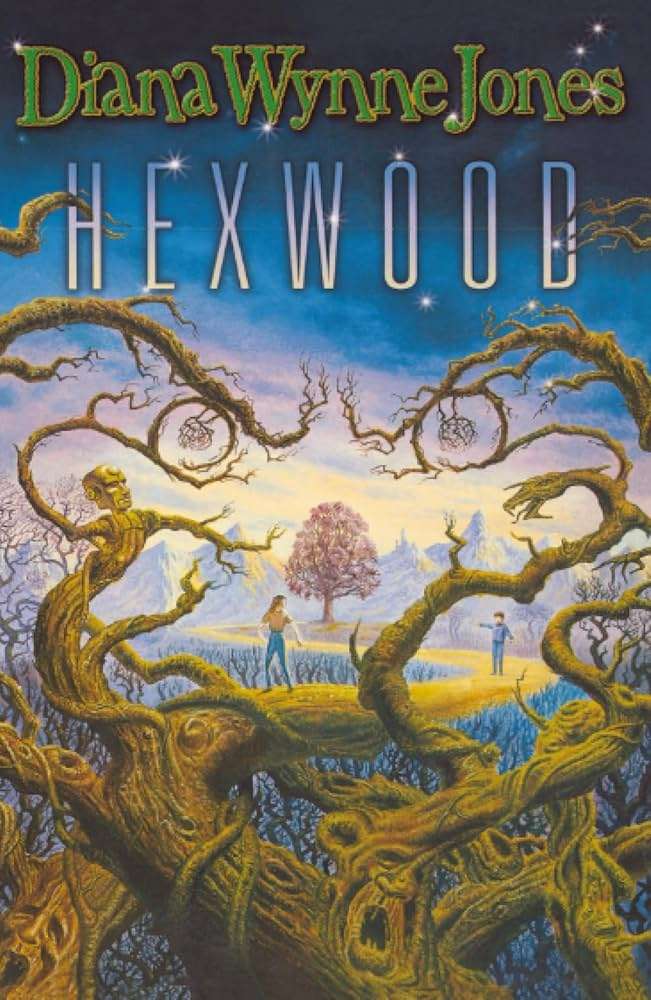
The Circle of Magic quartet by Tamora Pierce also looms large in my memories. I think that was the first secondary world that made me feel like I wanted to live there and the characters became like friends.
I think I’d also be remiss if I didn’t mention His Dark Materials, which I remember finishing when I was a bit older, maybe thirteen or fourteen and right in that moment of burgeoning sexuality and loss of innocence that the trilogy concerns itself with and I remember that I finished the last page of The Amber Spyglass and lay on my bed and sobbed. I don’t think I’ve ever had that reaction to a novel since.
How does that early influence show up in your work now?
Maybe one way is how I feel a lot more drawn to so-called ‘soft’ magic systems. I rarely see a reason to codify the fantastical elements of my novels, or to break them down to see how they work. I’m comfortable with the unexplained and the surreal — more than comfortable actually! I think being drawn to books about nature magic and hedge witchcraft has influenced who I am as a person too — not just in that I love pottering on my allotment and tending the herbs in my garden like a real millennial cliché, but also in a mindset of enquiry and skepticism about dominant narratives. Those fantasy books of my childhood and teens taught me that the world — and all human lives — are so complex that you can allow yourself to not-know, be comfortable in complexity and hold more than one true thing in your head at the same time.
Where do you draw your creative inspiration from?
Everywhere! Anything I read, listen to or see is inspiration. I always use the metaphor of compost, that everything you take in kind of goes into this dark, secret place inside you where it mixes with all the other sensory and intellectual inputs, your life experiences, your joys and your heartbreaks in order to transform into something new. Filled with nutrients, your personal creative compost is both completely new and extremely old and you plant your new projects in it and hope to watch them flower.
Who do you look to as a genre hero? Why?

I’m very inspired by writers who straddle that ‘literary’ and ‘genre’ space. I think because I’ve been told that’s where my work sits (confusingly, sometimes it’s meant as a compliment and sometimes not!) And there are a lot of those writers around at the moment, like Sofia Samatar, Kelly Link, Helen Oyeyemi — just off the top of my head! I also love writers who were doing fantastical things before the genre really existed as we know it now. The writer who is in my thoughts right now is Sylvia Townsend Warner. Her work Kingdoms of Elfin was very influential on the book I’ve just finished but she wrote a novel about a group of nuns in a medieval abbey called The Corner that Held Them which is just fantastic and straddles lots of tones and genres.Â
(Image: Sylvia Townsend Warner by Howard Coster, 1934, source)
Your work
You’re stuck in an elevator for 60 seconds with that hero, and they want you to describe your work. Give us the pitch.
OK, so I’d probably waste thirty seconds telling Diane Wynne Jones how much I loved the way that she took real people with all their foibles and idiocies and placed them in fantasy settings, and then I’d get myself together and say something like: “In subject matter and tone my books are different every time but they’re all about the ways we’re trying (and failing) to love and be loved. There are echoes of fairytales and myths, the unrepentant beauty of the natural world, art and music and often (and I’m not sure why) some sort of human sacrifice.” And then I think I’d ask her a few questions about the history of the Chrestomancis, and how the bureaucracy of magical leadership in that world might work.
What are you working on right now?
I’m in the final editing stage on a book that hopefully I’ll be able to introduce to the world quite soon! It’s incredibly dear to me and in some ways quite personal. It’s set in the pretty magical world of a touring ballet company, drawing on my experiences in my past life as a professional ballet dancer. There’s a magical train, a trickster crow and fae folk, so it’s a fantasy novel, not precisely a memoir or a work of autofiction but there’s a bit of overlap!
I’m also in the early stages of wrestling with a first draft of something taking inspiration from nursery rhymes, London literal and metaphorical, and the early capitalism of the 18th century. I know these things don’t immediately seem like they’ve loads in common to build a novel from but I’m feeling excited by it so far and really enjoying the research and finding the voice of the novel as it’s developing.
Thinking about all the stories/work you’ve done, what sticks out most in your mind? Why?
I am so proud of my novel To Catch a Moon (currently out of print but I’d love for it to be available again one day and find new readers), which is a secondary world fantasy novel based on the paintings of the Spanish Surrealist painter Remedios Varo. The whole process just flowed from the images and at certain parts it was like the narrative was just telling itself. Varo was an artist very devoted to her internal life, to mysticism and tarot and fortune telling, and there were moments during the writing where I felt such a connection to her and a lot of synergy between my work and hers. My favourite was when I was deciding on the name for the capital city in the world I was writing, a city of canals and boats and winding water, like Venice or Amsterdam. For ages I had a place-keeping name in the hope that something would occur to me at some point, but it never did. When I came to the final part of editing, I still didn’t have a name for this city so I went looking in earnest. I started looking for words to do with Remedios herself, and I chose with one of her names (she had about seven), Uranga. It was from her maternal line, a name from the Basque language. (I won’t go off on a further tangent here about the ancient, non Proto-Indo-European origins of the Basque language but if you’re intrigued you absolutely should look it up!) I looked up the word Uranga in Basque and I found out it meant ‘place of water’. And honestly, I just felt her presence in the room with me, hunched over my laptop, tea and chocolate on my desk, and it was almost as if she was giving me her blessing to create from her images.
Another project that was a joy from start to finish was a collaboration with my friend Magda Knight. We made Lore and Disorder, an anthology of mutated folklore fiction with contributions from thirteen wonderful writers and raised over a thousand pounds for the food bank charity Fareshare. The stories are so, so good! And it was all done in this punky, DIY spirit of just making the work that we wanted to see exist in the world and that was incredibly inspiring to me.
Where and when do you create/are you at your most creative?
I’m at a point in my life where I have to write whenever and wherever I can because I’m mostly a stay at home mum to my two daughters. Ideally I’d love to wake up before my family and do morning pages and yoga or whatever and then segue seamlessly into breakfast and two thousand words. But realistically I snatch moments during nap times and after my daughters have gone to bed — which is also when I pay the electricity bill and do the Sainsbury’s order and hang out the washing, so you see my problem here. Sometimes I get to sit down and get an hour immersed in my imaginary world and even if I end up not managing much writing in that time I try to count it as a win.
(Pictured: Rym’s tiny desk, “considerably more tidy than usual!”)

What’s the best advice you’ve received about creativity?
All advice about creativity is good advice — for the person who gave it. We’re all so different in terms of what inspires and motivates us, and we’re all like gardens in that we all need different approaches at different times. Sometimes I need to hear about just sitting down, stopping procrastinating and getting on with it, and sometimes I need to hear about listening to my inner voice and taking my time to feel inspired.Â
One thing I have found is that I need to fill the creative well. That is often by reading, and much of the time I read a really fantastic novel that makes me think, yes, that’s how to do it, off I go to try and do something like that; but often it’s a film, an album, a conversation with a dear friend. Sometimes even an interesting article in the newspaper. Staying curious, staying open to channelling the swirling energies of the world, staying alive to the paradoxes and changes of our lives is a good way to be able to rely on your well, as well as being (in my humble opinion!) a good way to live.
What’s your writing soundtrack?
I can’t really write with music on, particularly if it’s got lyrics. I just end up staring into space, following the rhythm of the song rather than listening internally for how to tell the story. I often read interviews with writers who compile a soundtrack and almost induce a Pavlovian response in themselves to get into the zone for their project whenever they put it on. I can see myself trying that for a future novel but music hasn’t ever worked for me before!
The quickfire round
Sci-fi, fantasy or horror?
Fantasy, by a hair.
Quiet or loud?
I’m a real fan of a novel that goes quiet, quiet, quiet, LOUD. Not exactly an elegant, technical way of expressing that but I hope you know what I mean. For most things, I think quiet wins out.
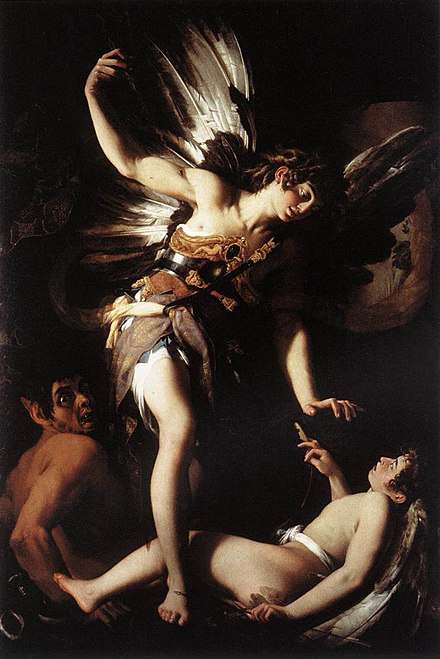
Dark or light?
There are a lot of ways to interpret this and I think right now I’ll go for the most literal one; day over night and summer over winter. (But if we were talking mood in fiction and works of art and life in general I’d like to be incredibly annoying here and ask us all to consider the renaissance term chiasoscuro – light/dark – and how the contrasts between light and dark in the work of a maestro like Terry Pratchett, for example, give you this reading feeling of oh, this person completely gets it, whatever ‘it’ is.)
(Image: Giovanni Baglione. Sacred and Profane Love (1602–1603), showing dramatic compositional chiaroscuro, source)
Strict lines or genre blend?
Genre blend every single time!
Awards or bestseller?
Oh, tricky. I think bestseller to be honest.
Fiction or non-fiction?
Fiction. I need a story to hook myself into.
Poetry or prose?
Poetic prose please!
Plotter or pantser?
A mixture. I plot a bit and then change my mind, pantsing until I’m stuck in a hole and then I need to plot myself out again, all the way to the end.Â
Reading or listening?
Reading. I find it hard to concentrate on a story when I’m only listening.
Notebook or computer?
Computer for writing fiction, but I have a notebook that contains my whole life — ideas, lists, to-dos, books read, books to read. I can’t live without that notebook.Â
Favourite SFFH book of all time?
That’s going to change every day but I think today it’s The Dispossessed by Ursula K Le Guin.
Last book you read?
The Mad Sisters of Esi by Tashan Mehta
Any SFFH author on auto-buy?
Sofia Samatar
Favourite podcast?
I always listen to Publishing Rodeo — it’s an education! But more long term, This American Life is a go-to.
(Photo of Sofia Samatar by Beowulf Sheehan, source)
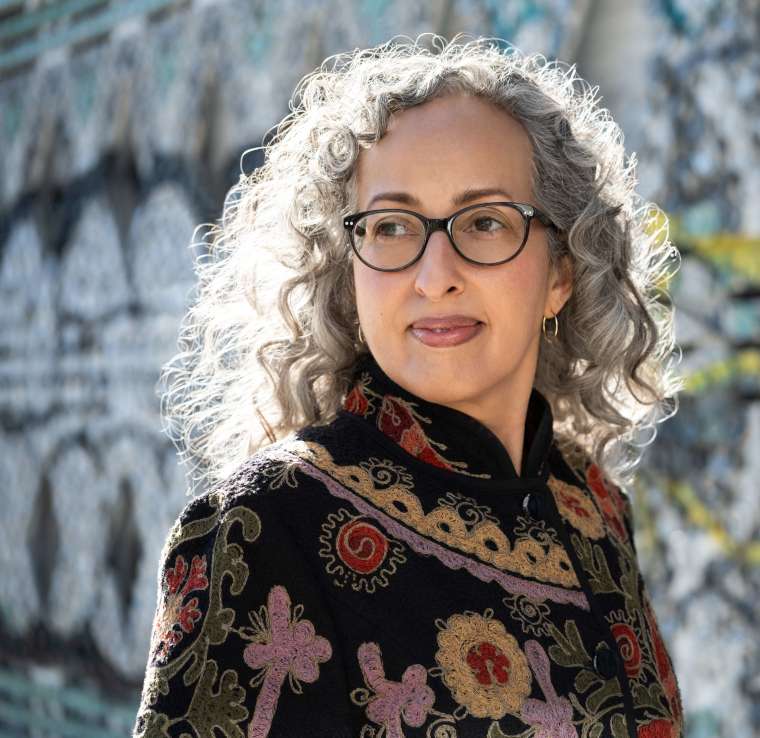
The home stretch
What’s the best thing about being part of the SFFH community?
As a reader, the sheer amount of amazing books about! As a writer, the way that readers can engage so deeply with your work. I think the fantastical hooks itself into the imagination so much that the rewards are huge.Â
Time to plug your stuff! Where can we find you and your work? What have you got coming up? Consider this your advertising space.
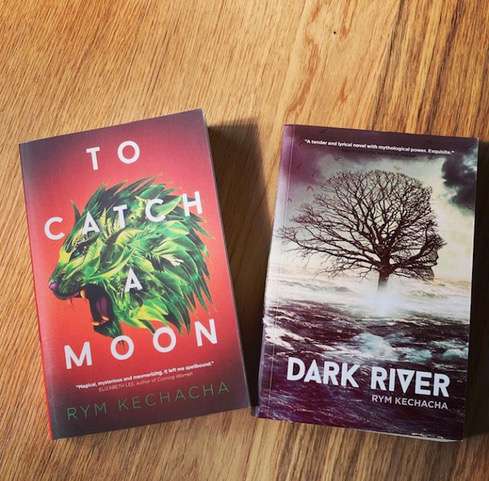
Although I’m not the world’s best photographer I am on Instagram (@rymkechacha), and I have a website which has lots more information about me and my books. I’ve also recently started a newsletter where I’m hoping to be able to share occasional updates on my new projects (watch this space!) and thoughts about all the wonderful things across all art forms that I love. You can read and subscribe here.
(Pictured: Rym’s first two books)

